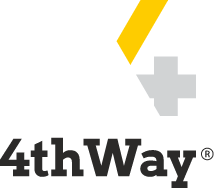To get the best lending results, compare all P2P lending and IFISA providers that have gone through 4thWay’s rigorous assessments.
Somo Now Taking First Loss On Most Loans
On second-charge loans approved on or after 1st November 2025, Somo* is providing 10% first-loss protection on the money you lend.
“Second charge” means that you are legally ranked second in line behind a bank or other lender that is also lending to the borrower, when it comes to recovering a bad debt.
The total Somo will ever pay out for the guarantee is capped at £1.2 million.
Somo's guarantee cuts in when all reasonable attempts to recover a bad debt in full have failed.
If you and other lenders lend £200,000 in a second-charge loan, and the borrower in the end is unable to repay £50,000 of that even after the property is forcibly sold, Somo will pay the first £20,000 of the loss. That's 10% of the loan.
The loss is therefore reduced from £50,000 to £30,000 out of the £200,000 lent.
A 10% first loss is approximately the equivalent of a two to four percentage point reduction in loan-to-value (LTV), depending on the loan.
“Loan-to-value” means the loan size versus the property's expert valuation, so a £70,000 loan on a property valued at £100,000 is 70% LTV.
(If you're confused or curious as to why a 10% capital loss guarantee doesn't equal a 10% LTV reduction, the explanation is lower down this page.)
The flip side to all this is that Somo wants to approve some loans at higher LTVs – getting up to what it justly calls the “market norm” of 75% from its current cap of 70%.
That said, with its low LTVs on most loans right now, it will have to approve a lot at this higher ratio to substantially impact the risks a lot.
Somo's guarantee doesn't cover unpaid interest from the borrower, so the guarantee cuts in only after your interest has already been reduced to zero.
How substantial is this protection?
There were more than 360 Somo loans in the 12 months to September 2025. Three-out-of-every-four were second-charge loans. Loans like those that Somo approves from November onwards are covered by the guarantee.
Somo loosely projects it will reach £40 million of second-charge lending from 1st November 2025 through 2026, which I think is a reasonable guess. That would equate to maybe 200 loans at about £200,000 each.
£1.2 million on that is a vast amount, considering that, even in disaster years, in most types of disaster scenario, few loans are likely to suffer substantial losses, according to 4thWay's detailed assessment of Somo's loans.
At around £20,000 average cover per loan, perhaps a third of the guarantee-protected loans would need to suffer substantial losses for it to be used up in full. That's not at all likely with these loans.
How is the guarantee funded?
Somo will hold a cash reserve with a value that is at least 0.1% of the loan amounts covered by the guarantee.
That means it will be holding £40,000 when the second-charge loans reach a total outstanding amount of £40 million.
£40,000 is just 3.3% of Somo's maximum liability of £1.2 million. In other words, the guarantee is largely unfunded.
However, Somo pulls in a lot of cash of its own each month and is highly profitable, hitting £4 million to £5 million each year for the past four years (before paying out profits to its shareholders).
Plus, it states that its cash and other assets currently outweigh its debts by about £24 million, making its pledge well backed and very meaningful.
I therefore think that Somo* has sensibly capped the guarantee at a point that is highly affordable and realistic, so that lenders can have the confidence that it will actually pay out as intends.
How useful is the guarantee?
No lender has lost any of their money on any Somo loan since it started in 2014, even though there have been around 2,000 loans – with three-quarters of them repaid and the rest looking healthy.
Indeed, lenders have lost only a negligible amount of interest on its worst-performing loans, barely denting returns.
4thWay's core tests – which are stricter versions of the tests global banks have to do – find that the risk of an overall loss for Somo lenders after interest earned during a major recession and property crash, even without the guarantee, is exceptionally low on Somo's second-charge loans. (As well as its first-charge loans.)
Those core tests presume that lenders like you take standard, sensible steps to spread your money across many loans and hold onto them till the borrower has finally repaid (i.e. not selling them to exit early).
The guarantee takes the edge off the additional risk in any loans Somo approves at the new 75% LTV limit and it lowers risk slightly for its other loans.
Really, the main benefit of the guarantee is that it provides you with reassurance by putting skin in the game. That's especially as its founders can no longer put money in every loan as the business has grown too big for that.
That reassurance might help you feel more comfortable lending in Somo's second-charge loans rather than just its first-charge ones.
In turn, that might help you spread your money sensibly across dozens of loans, if you're not doing that already.
You get slight, additional compensation for risks in the second-charge loans by earning interest that has actually been around 10% per year. That's about one percentage point higher than Somo's first-charge loans.
Somo can change the guarantee at any time
Somo states that it will pay out on the guarantee at its own discretion, and that the cap can be increased or lowered at its discretion, and that it can remove the guarantee at its discretion.
It likely says that for legal or regulatory reasons, because all P2P and other online lending providers have had the same issue, when they have offered credit enhancements such as reserve funds or first loss.
(A notable exception is when they take on the first loss by actually lending in the loans themselves. But doing it that way ties up a lot of funds that are needed to grow their businesses.)
Despite that, I am confident that Somo will always pay out as expected and that it won't abuse its discretion.
If you want to understand some of the maths, read on past the “further reading” section. Otherwise, you've gone far enough!
Further reading
Visit Somo* Visit Somo or read the Somo Review.
Read more about the Second Charge Limited Capital Loss Guarantee in Somo's own words.
Read Somo's terms and conditions: click on that link and then see the box on the right. (Note the mistake (at time of writing) in Somo's terms and conditions where it states the guarantee reduces the effective LTV by 10%! I'm sure Somo will correct that sentence in due course.)
Why 10% protection isn't the same as a 10% reduction in LTV
The maximum LTV is rising to 75% and the maths isn't as straightforward as you might think. It's not the same as 75 minus 10 = 65%.
Nor is 75 – 7.5 = 67.5%. (Where 7.5 is 10% of 75.)
The effective reduction in LTV is actually smaller than that. I'll try to explain why as simply as I can.
Over the 12 months to mid-2025, the maximum LTV has been 70% on second-charge loans.
Over a third of the loans hit that maximum LTV. The typical average prior debt in the first charge on those loans was about 40%.
So let's say there's a £1,000,000 property. With lending at 70% LTV, the total borrowed is £700,000.
The first £400,000 is funded by the first-charge lender and Somo lenders in this loan are lending the additional £300,000.
That means that Somo commits to take a first loss of £30,000. So we reduce the total lent from £700,000 to £670,000. That is 67% of the property valuation.
So you're now effectively lending at 67% LTV, which is an improvement of three percentage points.
Therefore, it's not a drop of 10 percentage points of LTV, which would be 70 – 10 = 60%. Nor is it minus 10% to the LTV, which would be 70 – 7 = 63%.
I expect that loans at 75% LTV will typically be reduced to an effective 72%ish. That's a small tick up in risk on the previous maximum LTV of 70%.
4thWay will monitor how quickly loans at that new maximum LTV build up in the loan book to keep track of the risks for you.
That said, Somo will still mostly approve second-charge loans at 70% or under. This means that, all else being equal, most loans will come down in risk thanks to the guarantee. I estimate typically by the equivalent of three percentage points in LTV, with a standard range of two to four percentage points.
Need more examples to understand why there's a range?
Isn't the reduction in LTV always three percentage points? No.
Second-charge loans at about 65% LTV with about 35% first charge ahead of it are around average in Somo's loan book. Those will typically come down three percentage points.
However, if the spread between the first-charge amount is narrower, the effective reduction on LTV is lower. E.g.
– 60% LTV on the second charge on a £1 million property.
– 50% LTV on the first charge.
That's £600,000 to the borrower, with £100,000 funded by Somo second-charge lenders.
The capital guarantee is £10,000, so £600,000 minus £10,000 = £590,000. That's 59% LTV or a one percentage-point reduction.
The reverse is also true. A 70% LTV loan with a low first charge at just 20% reduces the effective LTV to 65%. A five percentage-point reduction.
Further reading
Visit Somo* Visit Somo or read the Somo Review.
Read more about the Second Charge Limited Capital Loss Guarantee in Somo's own words.
Read Somo's terms and conditions. (Click on the link and see the box on the right).
Independent opinion: 4thWay will help you to identify your options and narrow down your choices. We suggest what you could do, but we won't tell you what to do or where to lend; the decision is yours. We are responsible for the accuracy and quality of the information we provide, but not for any decision you make based on it. The material is for general information and education purposes only.
We are not financial, legal or tax advisors, which means that we don't offer advice or recommendations based on your circumstances and goals.
The opinions expressed are those of the author(s) and not held by 4thWay. 4thWay is not regulated by ESMA or the FCA. All the specialists and researchers who conduct research and write articles for 4thWay are subject to 4thWay's Editorial Code of Practice. For more, please see 4thWay's terms and conditions.
*Commission, fees and impartial research: our service is free to you. 4thWay shows dozens of P2P lending accounts in our accurate comparison tables and we add new ones as they make it through our listing process. We receive compensation from Somo and other P2P lending companies not mentioned above either when you click through from our website and open accounts with them, or to cover the costs of conducting our calculated stress tests and ratings assessments. We vigorously ensure that this doesn't affect our editorial independence. Read How we earn money fairly with your help.


